5 Things To Find In Nara
Top Photo: photoBさん on PhotoAC
The city of Nara is the historic and spiritual center of Japan, where Buddhism first flourished and the first capital city was built over 1300 years ago. Besides that, Nara city abounds in nature, from lush forests to its iconic free-roaming deer. I would like to introduce 5 highly recommended things to do in Nara city that you will enjoy.
Fujiwara-kyo: Flower Fields in Ancient Grounds
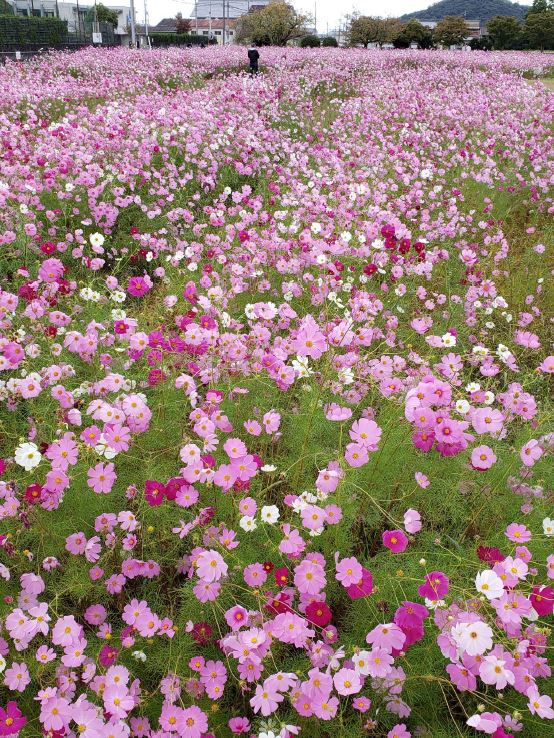
Photo Credit: Manuel A. Mendez
Imagine an ancient capital spread out over an area of over 20 square kilometers, guarded by three sacred mountains: this scene is the setting of Fujiwara-kyo, Japan’s first integrated capital city built 1,300 years ago. On the grounds of the former palace site there are large fields filled with rapeseed in spring, lotus in summer and cosmos in autumn. Around the site there are also many cherry trees and maple trees whose pink petals or colorful leaves can be enjoyed in spring and autumn respectively.
A Hiking Tour in Kasuga Primeval Forest
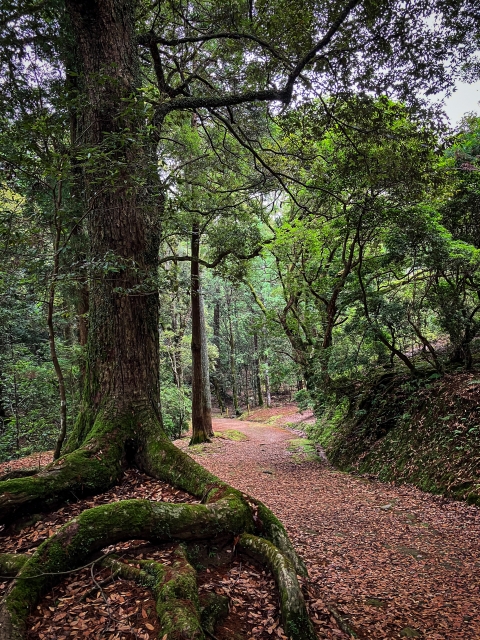
Photo Credit: nekko_nekon
Hiking in Mt. Kasuga Primeval Forest is one of the most attractive experiences in Nara. Mt. Kasuga Primeval Forest is located behind Kasugataisha Shrine and very easy to access from JR or Kintetsu Nara stations. You might be surprised that there is still remained magnificent natural landscape in the central area. It has remained untouched for thousands of years and has been carefully protected as the sacred forest of the Kasugataisha Shrine.
Todaiji and Nara Park
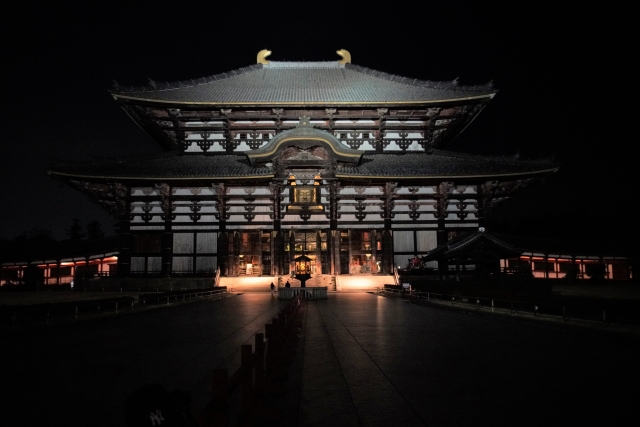
Photo Credit: アタゴール
Todaiji temple (“Great Eastern Temple”), a landmark of Nara, is one of the most famous and historically significant temple in Japan. This temple was constructed in 752 as the head temple of all provincial Buddhist temples of Japan. A symbol of Todaiji temple, the gigantic bronze statue of Buddha is sitting in the Daibutsuden (Big Buddha Hall) which is the largest wooden building in the world.The statue of Buddha is 15-meters (49 feet) high and around 500-ton weight.
Sake Tasting
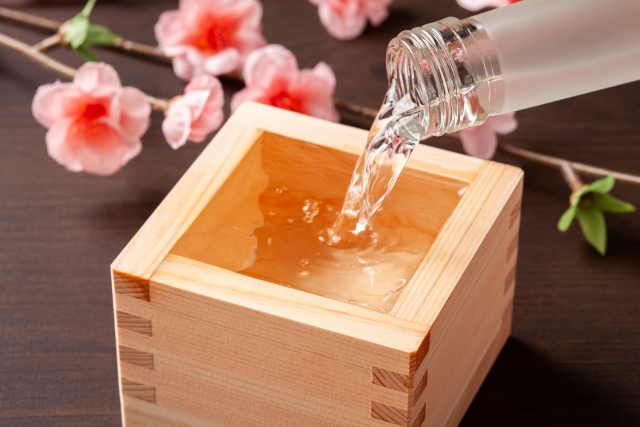
Photo Credit: ilikecatsverymuch
Japanese sake is getting popular worldwide. In old times, sake was made at shrines and temples in Nara to dedicate to deities. Techniques in the brewing process improved at temples in the Muromachi period (1336–1573). Shorya kuji Temple in Nara city developed the technique to make refined and clear filtered sake and was highly esteemed by people of that time. In our modern day, sake breweries have been taking over its techniques of brewing refined sake. That’s why Nara is said to be the birthplace of Japanese refined sake.
Now, there are almost 30 sake breweries in Nara Prefecture. Some started business over 300 years ago. Some still specialize in handcrafted sake You can taste sake at some sake stores. One of them, Nara Izumi Yusai, is located 10 minutes walk from Kintetsu Nara Station and Haru shika Fukuchiin cho, Nara 15 minutes on foot from the nearest station.
Kakigori: A Gorgeous Dessert
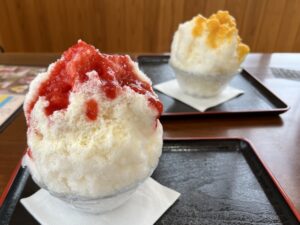
Photo Credit: PINA120
Have you ever tried Japanese “Kakigori”? It is a shaved ice dessert flavored with sweet syrups or powdered matcha tea, fruits, milk or sweet red azuki beans. If you are planning to travel in Nara or Japan in summer, kakigori is the perfect treat for a hot day! You can find many shaved Ice shops inside the covered shopping arcade. Nara is a calm, attractive and exciting place, and this is the perfect traditional dessert to finish off an exciting day of sightseeing in Japan’s ancient capital. And don’t forget to pay tribute to the deer!
Want to experience your own Nara adventure? Become an ALT today!
Photo Credits:
Top Photo: photoBさん on PhotoAC
Additional photos provided by the original author, nekko_nekon, アタゴール, ilikecatsverymuch, & PINA120
All other content (text) created by the original author and © 2022 MUSUBI by Borderlink
Health care, especially emergency health care, is something I did not worry too much about. That all changed one night in May 2019 when my family suddenly found ourselves at Tokyo University Hospital praying for my 8 year-old son who was hovering between life and death. That long night (and throughout my time in Japan), I learned some lessons about medical care which I will share with you; the most immediate and important of which is to BE PREPARED.
Step 1: Make sure you’re insured!
By law, everyone living in Japan is required to have health insurance. Basically, there are company-administered plans (of which BorderLink’s is one) and the National Plan, which is administered by your local Ward/City office. (I believe there are also private plans, but I am not knowledgeable enough about them to cover them in this article.) If the head-of-household’s spouse is a wage earner, he/she may have a separate account administered by his/her employer.
Minors fall under the head-of-household’s account and their insurance covers 100% of medical expenses until they enter high school (approximately 15-16 years old), after which coverage drops to 70%. (Note: The age of coverage dropping from 100% to 70% is set to change to 18 years old in the near future.)
The insurance coverage of those of high school age and above is 70%; however elective treatment (e.g. orthadonic braces) is NOT covered. Make sure that you and your family are all covered and carry your health insurance card at all times. (It fits neatly in the plastic sleeve that came with your Residence Card – which you legally must carry at all times.)
Why all that matters
The issue I would like to talk about is non-emergency care in public hospitals. In a non-emergency, when the need to visit a doctor arises, GO TO YOUR LOCAL CLINIC FIRST – preferably early in the day, so that a visit to a larger hospital during normal hours the same day is possible. Bringing along someone who speaks both Japanese and English is highly advisable, especially at a smaller clinic.
If you go to a major hospital (e.g. University of Tokyo Hospital, National Center for Global Health) without a reference from your local doctor, you will probably be required to pay a first-visit (for that particular ailment) fee of around ¥11,000, which is NOT covered by insurance.
There is also sometimes an after-hours fee which is also not covered by insurance. (The after-hours fee at the National Center for Global Health is ¥11,000 ) Therefore, it is much cheaper to go to your local clinic first. Your local doctor might hand you a sealed medical referral to give to the staff at a larger hospital of your choice. Obviously, you will need to bring the referral to the larger hospital. Sometimes your local clinic can set up an appointment for you at the your chosen hospital – on the same day even.
Alright, we’re going to the hospital…
Arrive at the hospital at least 60 minutes before your appointment and be prepared to wait. Since this will be your first visit (for this particular ailment) to the hospital, you will probably have to go to the First Visit Desk (usually near the hospital’s main entrance) to register, hand over the referral, have your insurance verified, and be issued a Hospital ID Card.
They also might require you to have laboratory tests performed, so be sure to bring water to drink. From there, you will be given a number and told where to wait. Larger hospitals sometimes have English-speaking staff or even interpreters; be sure to ask if the hospital provides this service.
Depending on the day of the week, and the number of patients, waiting times vary widely. (Days with inclement weather seem to have shorter waiting times, as elderly – who make up a large percentage of patients in some departments – seem to stay home on these days.) When your number is called or displayed on the screen, go the appropriate examination room door, knock, and then enter.

Photo by 78design
Hello, I’m the doctor
Not all doctors speak conversational English, but most have some ability. Doctors have only 5 – 10 minutes allotted per patient, so try to give succinct answers to his questions. He might ask you to sit or lie down on the examination table; be sure to take off your shoes before lying down. He or another doctor will perform an examination. If necessary, he will send you to another department (e.g. Radiology) for tests or to see another doctor.
After finishing your tests, waiting some more, and seeing the doctor(s) again; you will need to go to the Billing Department Counter for your bill to be determined. Usually, you will go to the counter, hand over your initial waiting number sheet, hospital ID, and insurance card. The receptionist will hand you yet another waiting number and any prescription forms (which you will need to present to a pharmacy – along with your insurance card – within a few days and before the end of the month).
Now the fun part- paying!
When your number is displayed (or called), go to the Payment (or Register) Counter (or Payment Machine, into which you simply insert your hospital ID) and you will be presented with the hospital bill. Some hospitals accept credit cards, others do not. If you are unable to pay, inform the person at the Payment Desk. (Usually there is at least one person behind the counter near the Payment Machines.)
Once you have paid, you will be given a receipt which lists the charges and should be kept for tax reasons. The receipt sometimes lists all your future appointments at that hospital. You are now finished.
I hope you enjoyed that! Now, if you’re wondering about the story that got me to go to the hospital in the first place, tune in some day for the sequel Hovering Between Life and Death: How an Alert Teacher, School Nurse, and a Surgeon Saved My Son’s Life.
Photo Credits:
Additional photo by 78designさん on PhotoAC
All other content (text) created by the original author and © 2022 MUSUBI by Borderlink
Top Photo: FineGraphicsさん on PhotoAC
Literally. The Japanese stable diet is primarily rice, and not just any rice – sticky rice which is consumed morning, noon and night. And yet, people are still able to remain slim!
A Changing Diet
The consumption of American long grain rice, basmati, brown and Thai rice were all parts of my diet once. But not on a daily basis! As an ex-boxer and Wing Chun practitioner in my earlier years, and an assistant instructor of Filipino martial art for the past 12 years, staying healthy hasn’t always been easy for me.
Due to differing food culture and life styles, the problem I seem to encounter is controlling my weight. Ever since I left the UK, I’ve steadily gained weight, which has taken its toll over the years.
I say all this as a person who’d trained 4 to 5 times in a week in a boxing gym plus cycling around the London capital to and from work. My immediate family members are dotted around the greater London area, so I was always on the move. I can say with a hand on my heart that I’m double the weight I was throughout during the 80’s, 90’s and early 2000’s.
It’s Always the Carbs
Carbs are an essential part of any diet, but when you reach a certain age, carbs can have the opposite affect. All of my favorite foods thet ara carb-based are best eaten in moderation. Based on my personal opinion, the consumption of Japanese rice is the cause of my weight gain, as well as the consumption of alcoholic beverages which I’d only consume during social events. After all, when in Rome do as the Romans do, right?
Shopping for healthy food here based solely on the Japanese one-size-fits-all diet may work for Japanese folks, but not for one used to the Afro-Caribbean diet. Even taking the usual approach to “healthy eating” doesn’t always work. Fried foods like fried chicken or karaage, tempura & such, while delicious, are not something I eat on a daily bases.
I try to avoid too much sugar and sweets. I consider my diet to be in the healthy zone- there’s fish, poultry, lamb, vegetables, fruits, nuts, berries, soybean curd noodles and so on which my wife so lovingly prepares (and on occasion I’ll prepare). But in the end, it all comes back to carbs.
So what am I to do? Brown or whole grain bread isn’t as popular as white bread, but they are sold in most supermarkets. Often they come in three-to-four slice packages so they can’t be considered a loaf. I mentioned in the opening of my article about American long grain, basmati, brown and Thai rice. They aren’t widely sold and are considered imported food items in a higher price bracket. Long story short, for less carbs, you have to do more legwork to get them.
Conclusion
Or maybe having to resort to going to such international delicatessens or purchase such foods and ingredients online is just the deterrent we need to eat them at all? You decide! I hope my article was informative as to help you make the right courses in your daily diet. after all, we are what we eat, right?
Photo Credits:
Top Photo: FineGraphicsさん on PhotoAC
All other content (text) created by the original author and © 2022 MUSUBI by Borderlink
Top Photo: lisa76さん on PhotoAC
(experiences as a foreign woman in Tokyo)
It’s a topic many are drawn to, especially those who plan on living abroad. Many people will experience dating life in some way, so I wanted to put together some simple tidbits for any readers who are curious about what the dating scene is like in Japan.
I’ve lived in both Gunma (the Japanese countryside) and Tokyo (the Japanese cityscape) so I have had a variety of experiences which I want to share. I will touch on topics such as meeting people, places that are commonly visited on dates, as well as advice on what to avoid or watch out for.
Meeting Potential Partners
Two of the most popular ways for meeting potential partners in Japan are meeting friends of friends as well as using applications whether they be dating or language exchange ones. Making friends in Japan is extremely rewarding as they provide a system of support. In my experience, after making friends, it’s very common for them to invite you to either events or outings with other friend groups which provides a good opportunity for expanding your friendship network or meeting potential partners.
In this day and age, applications are also a decent way to meet new people. I recommend Bumble amongst all of the dating applications as it is the one I have had the most positive experiences of. All of the partners I had met from Bumble were sweet and I never felt unsafe with them.
Rather than dating applications, language exchange applications, such as Hello Talk and Tandem are also good choices for meeting people either as friends or potential partners. Language exchange applications are recommended for those who want to start out a bit slower instead of jumping right into the dating scene.
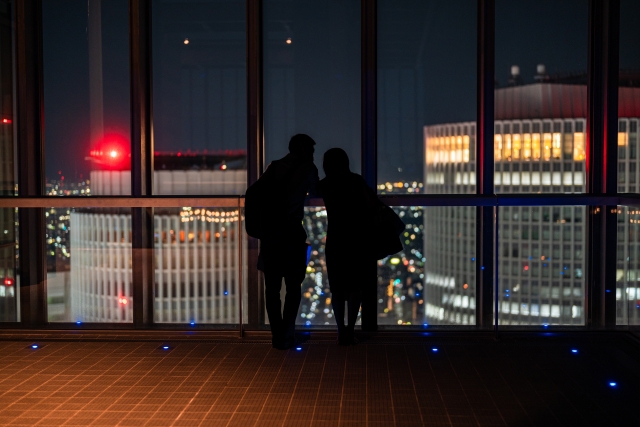
Dating Spots and Activities
Japan is full of fun and beautiful places that could be used as potential dating spots. If you like alcohol as well as a more relaxed atmosphere, izakayas (Japanese bars) are a good date idea. They can be crowded but provide a fun loving atmosphere as you sit amongst other people also having a good time. You can sit and relax as you get to know your partner amongst drinks and plenty of food options.
Many izakayas have delicious food for an affordable price so for those on a budget, they are a solid location for a date. Or, if you like the idea of a place you can play games, there are many places you can play darts, billiards and table tennis all in the same building. This is a great idea for a date as it takes the pressure off of simply sitting and talking, if you are not a fan of the izakaya idea. These places give you the opportunity to have fun with your potential partner and can create a positive atmosphere.
Things to be Cautious About
While dating in Japan can be fun, there are many things to be cautious about as well. Japan, in general, is a fairly safe country. I can walk to the convenience store in the middle of the night with little unease but no country will be a perfect safe haven. With experience comes knowledge of various red flags to watch out for when meeting potential partners.
I talked about a couple popular locations for dating but one of the most important things to remember is try not to have a first date in a secluded area such as karaoke or their house. Many think of karaoke as a fun dating activity, which it is, but only after you have known the people for a while. Karaoke is a closed room with just you and your partner, so it is not recommended as a first date idea in case your partner has ill intentions.
The same advice goes for not visiting their house or inviting them to yours. If your partner invites you to their house right off the bat, it’s safe to assume they have a motive other than a simple date. It’s important to have fun on dates but it’s just as important to be cautious.
These experiences and advice may not be perfectly applicable for everyone but I hope that there is some information that could prove helpful for those of you who wish to come live in Japan and experience dating life. Traveling abroad is a wonderful experience on its own but it’s only natural that you may find yourself wanting to try going on a date or two. As long as you stay safe and have fun, it can be a rewarding experience.
Photo Credits:
Top Photo: lisa76さん on PhotoAC
Additional Photo by Yoshi.Yuさん on PhotoAC
All other content (text) created by the original author and © 2022 MUSUBI by Borderlink
Top Photo: himawariinさん on PhotoAC
When I first came to Japan I thought that I could do anything I liked by using public transport to get there. Since then I’ve realized something, even if the current viral situation didn’t happen, I don’t think much would have changed. Within the first year I got a bicycle because walking and carrying your shopping was a pain. In fact I should have gotten a scooter back then already, but I was being stubborn.
In the three years before moving to my current town, I rarely made it further than 5km from my apartment, partly because traveling was discouraged and partly because the thought of going further than that made me tired. Tired from the thought of pedaling that far, tired from the thought of going on public transport and having to be around that many people when I wanted to relax. Even when I forced myself to go out, I would come back both mentally and physically exhausted, that led to me dreading the week ahead.
So how has that changed since I bought my scooter? Well for one I went about 25km away from my new apartment on the second day. (Always use the first day as a shakedown day to make sure everything’s fine.) I’ve also started to do some things that I love doing and that has greatly removed the mental strain that you find yourself under. The one is going for a ride, the other is doing a run.
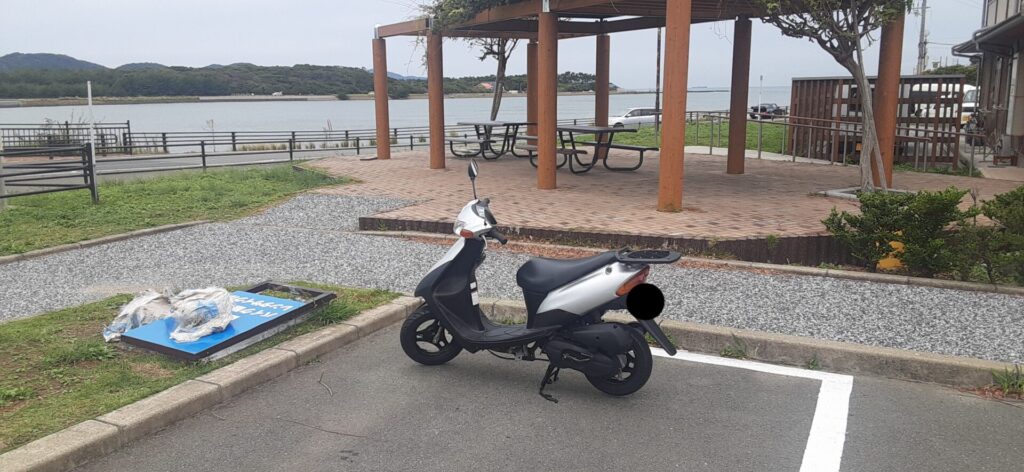
Going for a ride
Going for a ride is actually very simple. You get on your pike and just ride around. Now I’m not talking about riding around your neighborhood, here you decide on a direction and ride either till you find something interesting, or you see where a road leads and turn back only when you feel its time.
I’ve done this type of ride before in my car and on my scooter and they truly give you time to just get away from everything. So why not choose a place and ride there? The simple answer is that that gets you to a known place, whereas this gives you a change of scenery, which can do you so much good.
Going for a ride is a wonderful way to clear your mind, just remember to stay alert and to mind your fuel.
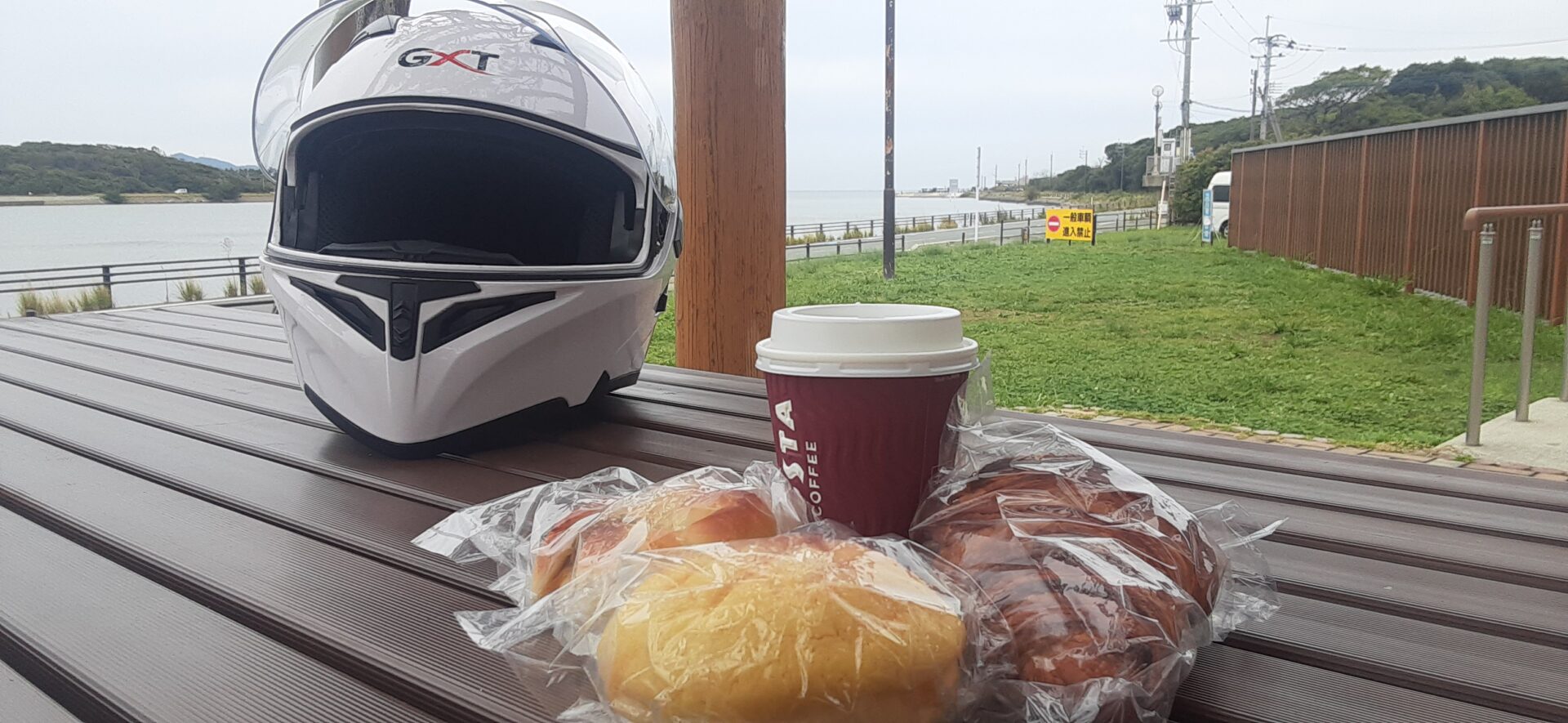
Doing a run
Be it a snack run, fun run, toy run, breakfast run, lunch run, or supper run, it doesn’t matter they all have a similar spirit to them. It is not about which one you do but the purpose that you do them with. The one I’ve been doing the most recently is the breakfast run, here I either do a planned or an unplanned run.
Planned: the planned run is the one that most people are familiar with, here you choose a restaurant or shop that has a breakfast menu, and then you plan your run to be there shortly after opening. The good part is that you know where you are going and can arrange that others meet you there. It also helps when you are in an area where the shops open later. I also use the planning time to actually look at the menus to decide what I’ll be having while there, though with the Japanese tendency to do seasonal menus, I don’t make that decision hard and fast.
Unplanned: this is my favorite one but also the one that can be the most challenging. The rules for this type of run is actually very simple. You get on the bike (or in the car) and then you ride into a given direction or using a given road. You ride until you find a place that you want you want to try something at and then you stop there. Sure this sounds easy, but it can be quite challenging.
On the first morning after getting by scooter I had set out on one such a run, at 7:30 in the morning. I took a nice coastal road and followed it towards my goal. I wanted to get a good cup of coffee. Sure I could stop at a konbini and get a cup, but I was looking for something more. So I rode my scooter, completely forgetting one crucial part, in Japan most stores open at 9:00 or 10:00, even the ones serving breakfast.
I rode my scooter, enjoying the scenic route, till I found a bakery with a coffee shop next to it. Then I realized I had almost 30min to burn before the shops open. So there I was, looking at a beautiful lagoon, people going past, and for some reason a long line of people waiting for another shop to open (this line was about 100m long), but this was also part of what is great about the unplanned run, you don’t have control over everything and just have to be there in the moment.
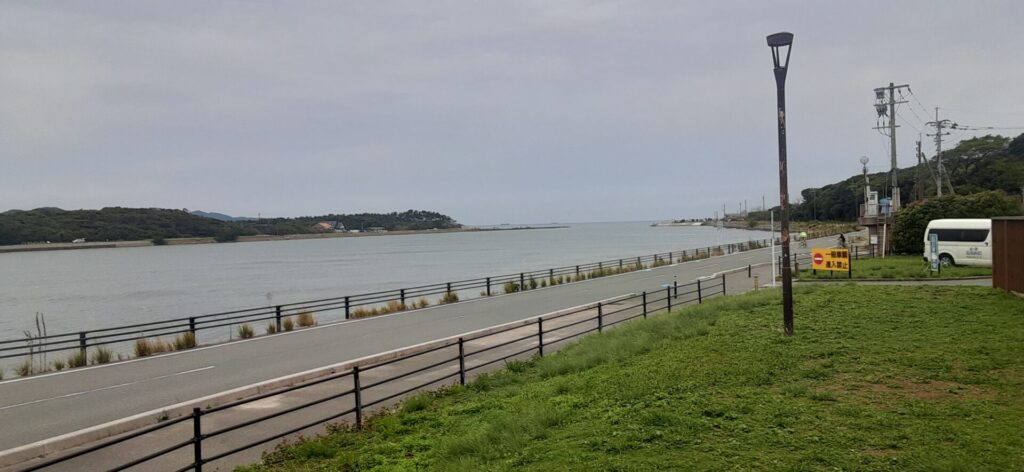
Conclusion
Coming to Japan for a year or a visit is fine and well, but we need these moments of just being if we are to stay here for a longer time. Life as an expat is sometimes stressful, and working as an ALT has its own stresses and pressures. So we need to find time to just be. For me it’s being in nature, fishing, going for a drive, enjoying a good cup of coffee while reading a book, or even just finding places where you are just an observer and not a piece of the puzzle.
So find your way of being and traveling, though I would recommend getting a scooter if you truly want to experience the beauty of Japan that you can’t see from the normal routes.
Top Photo: himawariinさん on PhotoAC
All additional images taken and provided by Timothy Horn, used with permission.
All other content (text) created by the original author and © 2022 MUSUBI by Borderlink
Cosplay was a whole new world when I first came to Japan compared to the U.S. If you’re unaware, cosplay is a niche, somewhat underground anime/manga culture worldwide where people will dress up as their favorite fictional characters, take pictures with their friends, or have full blown professional level photoshoots. I’ve been cosplaying in the United States for about 5 years before coming to Japan so I’ve had plenty of experience but when I came to Japan, the culture shock of differences I experienced were real as the vibe and atmosphere were opposite…
Cosplay Back Home
For those looking to start cosplaying, attend future events, or learn more about the subculture of Japan that you might occasionally see in Ikebukuro, Akihabara, Nagano, the three main anime spots in Tokyo, this is where to start. Before we dive right into my experiences however, first is some background on the American cosplay scene. In America, there are many anime conventions where anime/game fans congregate and socialize, party, meet people in the industry or fan run panels.
Regardless of the quality of the cosplay, people will ask cosplayers for a picture with their cell phones, compliment their cosplay quickly, then leave. There might be planned group photoshoots where people can come and take pictures as they please and leave circling the cosplayer. This chaos of people coming and going is normal and there is a lack of direction or organization to the process. Not only that, while times have gotten better, there is a lack of respect and consent for cosplayers getting their pictures taken and even getting harassed or assaulted physically.
Convention events are usually volunteer or guest run events where chaos is the norm and line organization is practically non-existent. As these events are held at hotels, they usually have lobby, room, or rave dance parties where people are cosplaying all day and have a very big party culture in their presence, even during the corona pandemic. Masks were unfortunately disregarded very quickly in the United States and was not part of the safety culture in normal life as well as the cosplay scene.
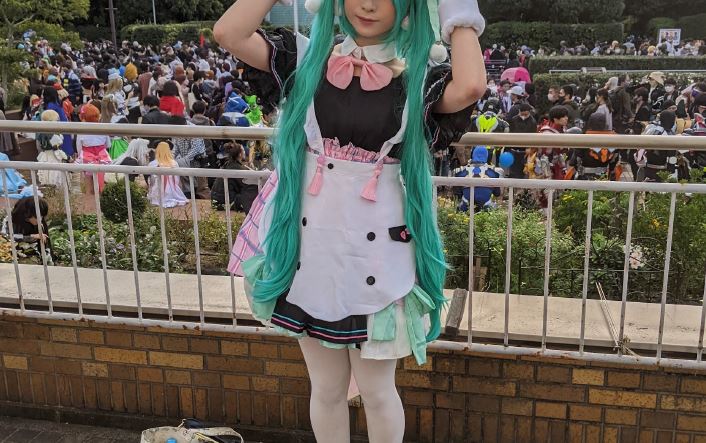
Cosplay in Japan
In Japan, the cosplay vibe is completely different. The amount of respect, safety, and organization that I’ve seen is night and day compared to what I’m used to in the United States and is a welcome change. While cosplay is a lot more niche in Japan, it’s also a lot more personal yet formal, polite, organized, and safe and comfortable. I have never felt so safe and fulfilled on an artistic level when it comes to going to cosplay events in Japan.
While there is a lack of a social aspect, it is definitely more of a hobby here in Japan where no money is exchanged between cosplayer and photographer. Lately in America, it has earned a reputation of clout chasing and trying to get monetization through social media and other subscription platforms.
To walk through an average day, first you need to buy a ticket online on the website (which is usually) lottery or presale as they will NOT be selling tickets on site. You need to do a little bit of work to find these events and if you google in English “cosplay Tokyo events,” it’s not gonna cut it.
A Beginner’s Guide to Cosplay in Japan!
The main event for beginners I recommend is Acosta. This organization has many events in Tokyo, Osaka, Fukuoka, and occasionally other parts throughout Japan. As I live in the Kanto region, once a month in Ikebukuro Sunshine City Mall on the rooftop is the main photography area. To participate, a ticket costs 2000 yen for a changing room. It’s a faux pas, but you technically can just arrive already in cosplay and not need a changing room. However, riding public transportation is generally frowned upon by the Japanese cosplay community as they don’t want to disturb the public.
When you enter the changing room, the amount of female attendees greatly outnumber the males by about 80-20%. In a big gymnasium style room with a square taped area on the bare concrete floor, you’re expected to sit down, do your makeup, wig, and put on your costume usually within an hour. These events are usually 10:00 am-16:30 pm so there is no after party (publicly) and you must change and be in regular attire when you leave.
When you leave the changing room, the way to get your picture taken is finding a background, stand in front of it, and wait. That’s it. There’s no chaos of you walking around in America and people chasing after you to take your picture. Japanese photographers are very respectful and will wait till you are ready to take your picture.
Not only that, but they will form into a singular line, one behind another, in front of you, each photographer patiently waiting his turn to get his best angles of you. At the front of the line, they will come up to you and ask in English or Japanese “May I take your picture?” “撮影は大丈ですか?(satsue (photoshoot) wa daijoubu desuka?).” After 4-5 poses, they will ask you for your social (99% Twitter, I literally just made a Twitter for this), then in a day or two later will thank you again on Twitter and send you the RAWs to download on Gigafile, a digital sharing platform.
Eventually you will make friends and contacts with photographers and they will invite you to go to a cosplay photography studio with premade rooms just for aesthetic background pictures. As a beginner, I recommended making friends with other cosplayers to do a group photoshoot if you don’t feel comfortable going 1-on-1 with a photographer or if you’re not comfortable with Japanese yet.
These photoshoots will also be about 2 hours at one location but I know cosplayers who will even travel to ryokans and other scenic locations for more “authentic” looking pictures as if they’ve just stepped out of the anime. Also, it is also customary for you and the photographer to go out for drinks or a meal
afterwards (just like a nomikai) as thanks for the long studio photoshoot.
Conclusion
If you’re looking for a party, Japan is not the cosplay scene you will want to attend. If you want free artistic and high quality aesthetic pictures in a safe, polite, professional environment, then come to Acosta. Also, during the event, everyone will be wearing masks and only taking them off outside during shooting so there is also an extra level of safety compared to the West during these pandemic times.
If you want to go to Comiket (winter or summer), the ticket ’s a lottery system so you’re not even guaranteed a ticket nowadays because of the coronavirus as they’re only letting a certain number of people enter. If you love Halloween, I recommend trying cosplay once, you will get plenty of beautiful photos in return and experience a different new subculture compared to the West.
Photo Credits:
All additional images taken and provided by Anonymous, used with permission.
All other content (text) created by the original author and © 2022 MUSUBI by Borderlink
The Tadami Line is a train line that runs from Aizuwakamatsu, Fukushima to Koide, Niigata. This train line is famous for its breathtaking natural views. A ride on it offers spectacular mountain and river views.
In July 2011, the track was knocked out of service. Torrential rains caused flooding that all but washed away some of its iconic bridges. Now, after 11 years, the Tadami line has reopened in full as of October 1st, 2022! Many local residents and train enthusiasts celebrated its return.
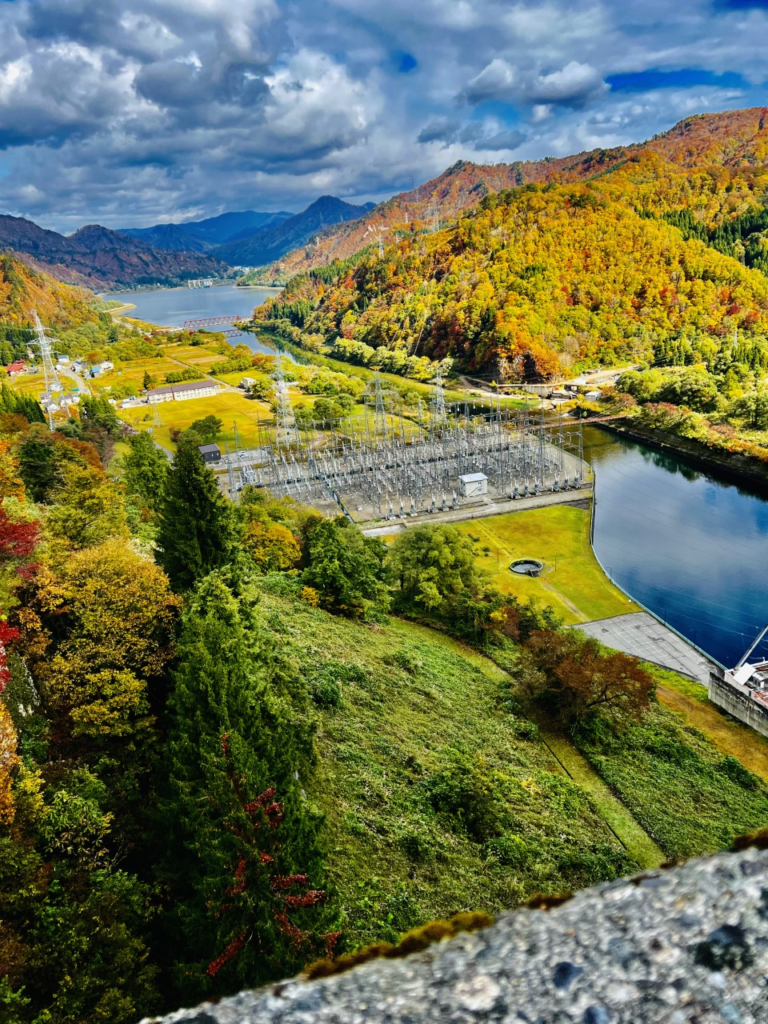
The train line gets its name from Tadami, a town located in the Aizu region of Fukushima prefecture. It also includes the “natural capital” of Japan. The first town in Tohoku to be certified by the UNESCO Eco Park, it’s a place rich in nature where people co-exist with the natural world.
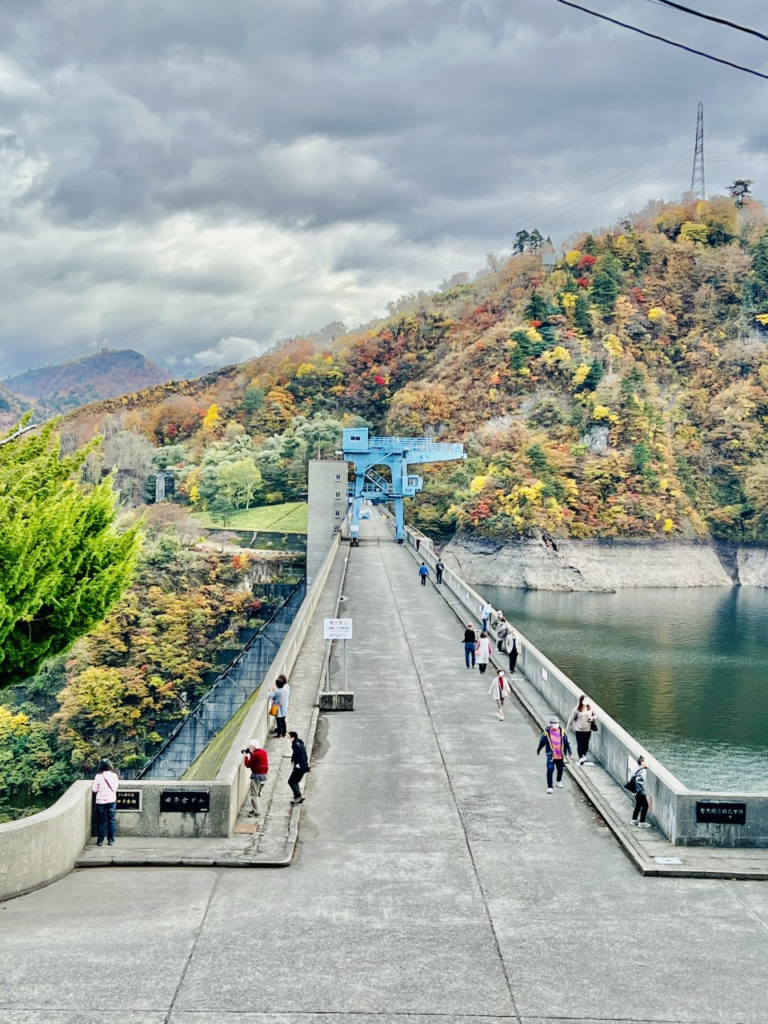
So why not celebrate the return of the Tadami line yourself? Visit the beautiful town, and book a romantic trip on a train line that offers some spectacular scenery!
All additional images taken and provided by Mira Araake, used with permission.
All other content (text) created by the original author and © 2022 MUSUBI by Borderlink
Top Photo: ヒロタカ05さん on PhotoAC
Autumn has arrived, and I know everyone is eager to enjoy the beautiful “color change of leaves,” or koyo in Japanese. However, autumn would be incomplete without trying delectable autumn foods in Japan.
Japanese people believe that their appetites increase during autumn due to the abundance of good food. This season is regarded as the best season for hearty eating in Japan. It is also known as shokuyoku no aki (Autumn Appetite). Autumn is unquestionably my favorite season, from the delicious foods to the breathtaking color change of leaves. Here are my top 6 best autumn food in Japan.
1. Matsutake Mushrooms (まつたけ)
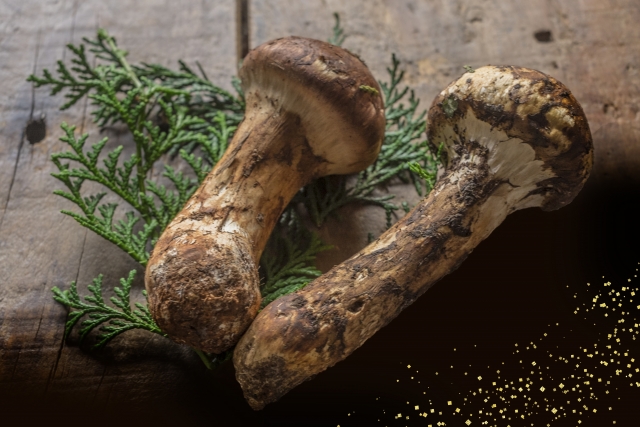
Photo by: cheetahさん on PhotoAC
Matsutake mushroom (まつたけ) is known as the “King of Autumn Foods” due to its fragrant aroma and rich flavor. The scent is reminiscent of autumn, with hints of sweet cinnamon and cypress. It’s firm and meaty, with a spicy flavor. Many Japanese people enjoy cooking it in flavored rice or soup to enjoy its delicious aroma. Matsutake mushrooms contain B vitamins, protein, copper, potassium, zinc, and selenium. All of these minerals are necessary for a healthy diet.
2. Persimmons (柿)

Photo by: umaimonさん on PhotoAC
Persimmon (柿, kaki) is a fruit popular in Japan during the autumn season. Persimmons come in two varieties: sweet and sour, which are typically used to make dried persimmons. The sweet one can be eaten raw or used as an ingredient in desserts such as jelly, Yokan, and others.
3. Chestnuts (くり)
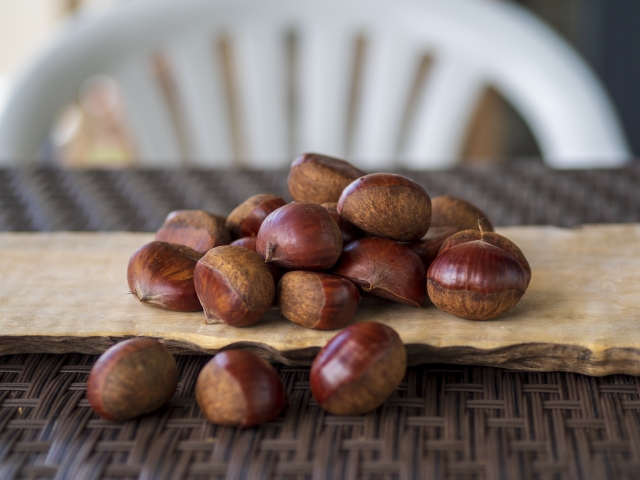
In Japan, chestnut (くり, kuri) is a popular type of nut. It is believed that Japanese people began eating it as a staple diet over 5,000 years ago. Simply boil it with salt, soy sauce, and cooking wine to enjoy its rich, sweet flavor. Chestnuts are frequently used in the preparation of decadent confections such as cakes and Yokan (a thick, jellied red bean dessert).
4. Sweet Potatoes (さつまいも)
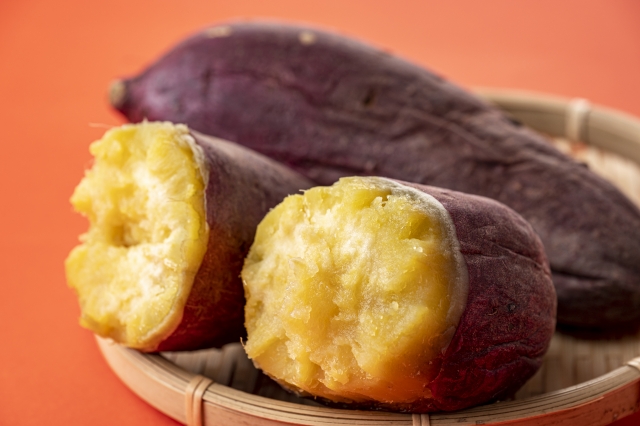
Roasted sweet potatoes (さつまいも, satsuma-imo) are said to remind Japanese people of autumn. Japanese usually eat yaki imo(grilled sweet potato) as is. It makes a filling yet healthy snack, but it can also be served as a side dish as part of a meal. They also enjoy sweet potato confections such as Yokan, cake, and candied sweet potatoes (daigaku-imo).
5. Apples (りんご)

Photo by: six-cubeさん on PhotoAC
There are numerous varieties of Japanese apples, including Tsugaru Apples, Orin Apples, and Matsu Apples. During autumn season, some Japanese people enjoy going apple picking on weekends. Apart from being eaten fresh, apples can also be made into delicious juice, jam, pie, wine, and even vinegar!
6. Asian Pears (梨)
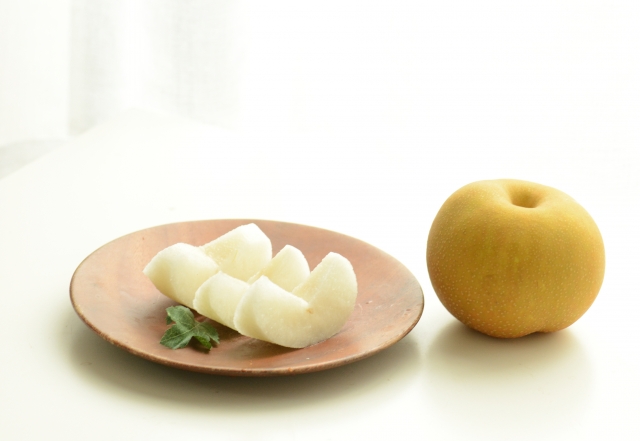
Photo by: artemiaさん on PhotoAC
Asian pears (梨, nashi) originated in China and Japan and are shaped similarly to apples. They have crispy and juicy skin that is yellow, brown, or green. Asian pear and apple picking are two of the most popular outdoor activities in Japan. This fruit is primarily consumed fresh, but it is occasionally used to make jelly or tart.
Conclusion
From nature to food, Japan has something for everyone in every season. Don’t pass up any opportunities to enjoy this wonderful experience!
Want to sample such delicious delicacies next autumn in Japan for yourself? You can become an Assistant Language Teacher for Spring 2023 with Borderlink!
Photo Credits:
Top Photo: ヒロタカ05さん on PhotoAC
All other content (text) created by the original author and © 2022 MUSUBI by Borderlink
The old saying of “wheel get there when we get there” is a funny one, but also apt for living abroad. And before you say anything, yes, I do know I used wheel and not we’ll. This is because this article is all about wheels and more specifically the route to mobility that many of us will have to go through.
When I first came here, I decided to walk everywhere and to use public transport when it was further out. This lasted about a year till I realized there was no trophy for walking 2.5 km each way every day just to get to work. All you got from it was sore feet and tired bones.
So the next option is one I recommend for every person who comes to Japan to work. This was to get myself a basic bicycle with a front and rear basket. This made food runs so much easier and cut my commute by a lot. Sure I wore through 2 sets of tires and blew out an inner tube the one time, but it was still worth it.
That all changed when I moved to a rural town and away from the very flat area of my previous city. This actually brought along aching knees and stiff backs, as now I had to regularly pedal my 1 speed bicycle up steep hills. So I decided to take the final step, one that I’ve been putting off because of the hoops involved.
As some of you might have guessed, this was to get a moped license. I went for the moped license purely because they are the easiest to get unless you are from one of the chosen countries that can just do a straight conversion. While I still plan to get my full license converted at a later time, this would involve many visits to a driving license center more than an hour away from my town.
As I mentioned there are many hoops that you’ll have to jump through to get even the moped license and so ill go through the steps that I had to for your entertainment. First I had to get my license translated and while it was easy to do, it still took a lot of time and a bit of money. Next I had to get photos taken and the first set was actually the right size and composition, except that it had the wrong background, so I had to go get another set.
Next I had to go to the town hall to get proof that I was registered in the prefecture (and no your residence card does not count for some reason). Finally with all this in hand I just needed to grab my residence car, drivers license, and all the passports that I had with me, and I could head to the driving license center. Only I couldn’t, and here is my first tip; go to the prefectural driving license center’s website and check their requirements, times they are open, when they process license conversions, procedures for the specific center, and anything else that they may have hidden there.
I can’t stress this step enough; in one area they may do the conversions every weekday, on others just certain days. They could take everyone that comes, or they only take a small number. They may have two sessions in a day, or they may split the process over two day. They may take walk-ins or they may require appointments.
My next tip is as follows; take someone with to interpret for you if you are not fluent in Japanese. Even if you are able to get through the process, they often have questions and sometimes they will refuse to proceed if you want to use a translation app or device.
The process itself is rather simple but time consuming, you submit the documents, they inspect them, ask you couple of questions, and then if that clears they administer the needed tests. The only thing is that it can take the whole day or the better part of two separate days to get it done.
But once all this is done, you are given your brand new license, and wit that a whole different side of Japan opens up to you. Now you are set to travel to the parts of Japan that aren’t easily accessible by bicycle or public transport.
Being mobile is as good for the soul as it is for the body, and Japan has amazing areas to visit. Sure a car or motorcycle would be better, but their parking also costs a lot. So for a budget conscious person, this is the better option.
That is why I recommend not following my example, don’t wait three years to get the moped license, try to get it as soon as possible. Sure an international driver’s license is good for the first year, but getting the local one before it expires will aid you in the long run.
Photo Credits:
All other content (text) created by the original author and © 2022 MUSUBI by Borderlink
